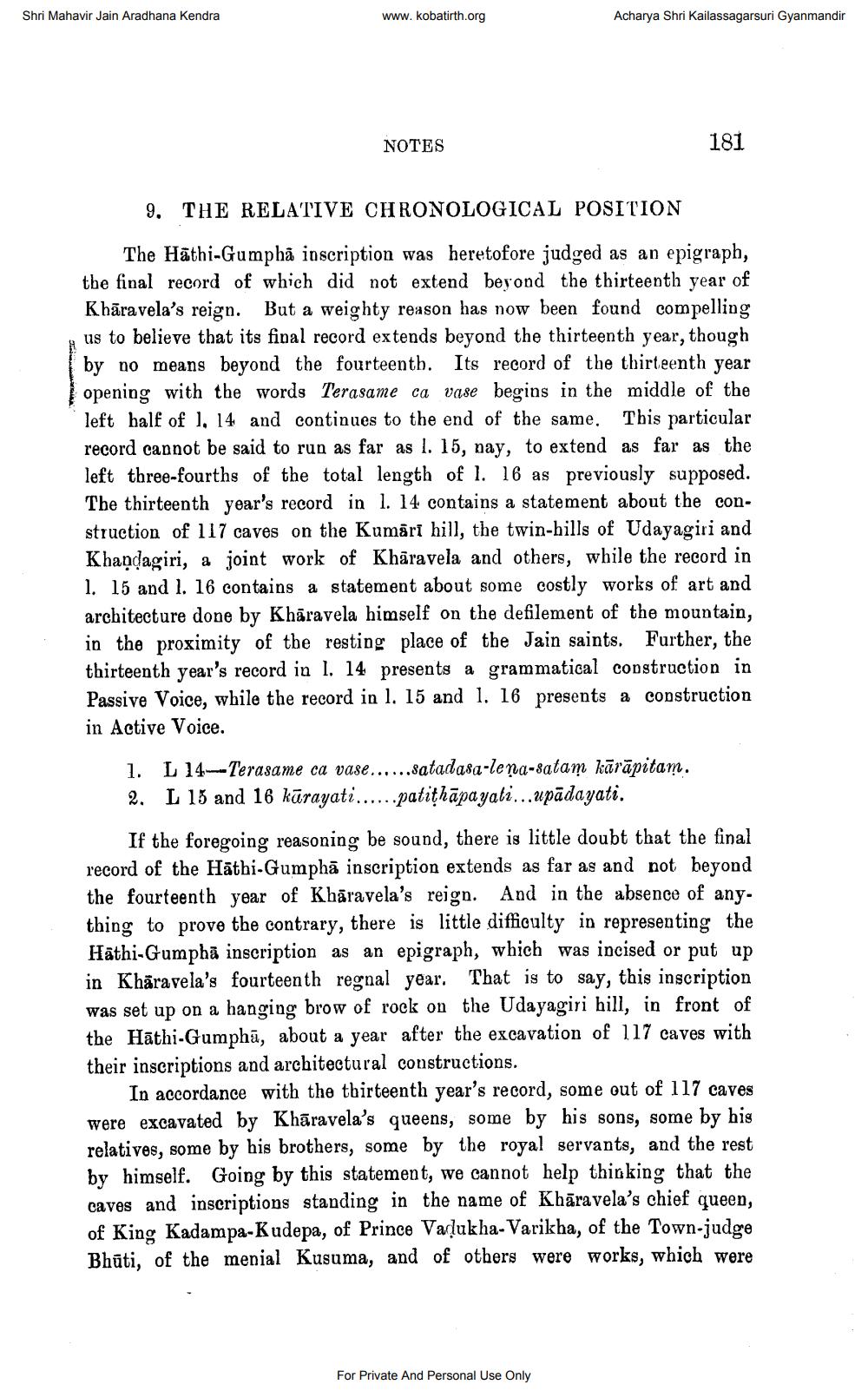________________
Shri Mahavir Jain Aradhana Kendra
www.kobatirth.org
Acharya Shri Kailassagarsuri Gyanmandir
NOTES
181
9. THE RELATIVE CHRONOLOGICAL POSITION
The Hathi-Gumphã inscription was heretofore judged as an epigraph, the final record of which did not extend beyond the thirteenth year of Khāra vela's reign. But a weighty reason has now been found compelling us to believe that its final record extends beyond the thirteenth year, though by no means beyond the fourteenth. Its record of the thirteenth year opening with the words Terasame ca vase begins in the middle of the left half of 1, 14 and continues to the end of the same. This particular record cannot be said to run as far as I. 15, nay, to extend as far as the left three-fourths of the total length of l. 16 as previously supposed. The thirteenth year's record in 1. 14 contains a statement about the construction of 117 caves on the Kumāri hill, the twin-bills of Udayagiri and Khandagiri, a joint work of Khāravela and others, while the record in 1. 15 and l. 16 contains a statement about some costly works of art and architecture done by Khāravela himself on the defilement of the mountain, in the proximity of the resting place of the Jain saints. Further, the thirteenth year's record in I. 14 presents a grammatical construction in Passive Voice, while the record in 1. 15 and 1. 16 presents a construction in Active Voice.
1. L 14--Terasame ca vase......satadasa-lena-satam kārāpitam. 2. L 15 and 16 kūrayati......patithāpayati...upādayati.
If the foregoing reasoning be sound, there is little doubt that the final record of the Hathi-Gumphā inscription extends as far as and not beyond the fourteenth year of Khāravela's reign. And in the absence of any. thing to prove the contrary, there is little difficulty in representing the Hathi-Gumphā inscription as an epigraph, which was incised or put up in Khāravela's fourteenth regnal year. That is to say, this inscription was set up on a hanging brow of rock on the Udayagiri hill, in front of the Hāthi-Gumphā, about a year after the excavation of 117 caves with their inscriptions and architectural constructions.
In accordance with the thirteenth year's record, some out of 117 caves were excavated by Khāravela’s queens, some by his sons, some by his relatives, some by his brothers, some by the royal servants, and the rest by himself. Going by this statement, we cannot help thinking that the caves and inscriptions standing in the name of Khāravela's chief queen, of King Kadampa-Kudepa, of Prince Vaçlukha-Varikha, of the Town-judge Bhūti, of the menial Kusuma, and of others were works, which were
For Private And Personal Use Only




